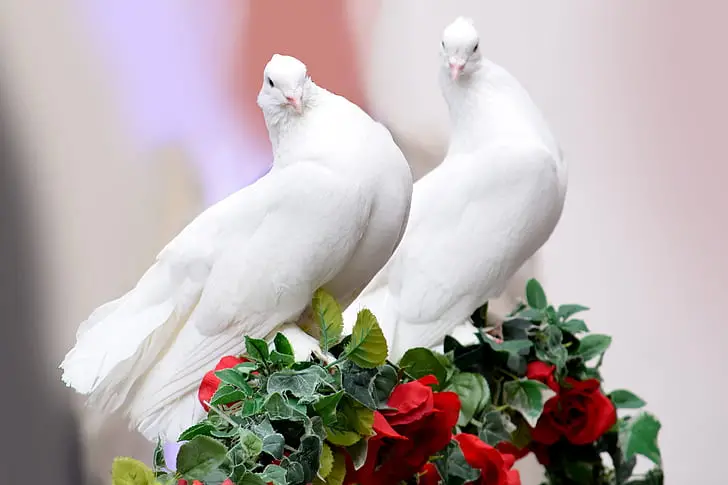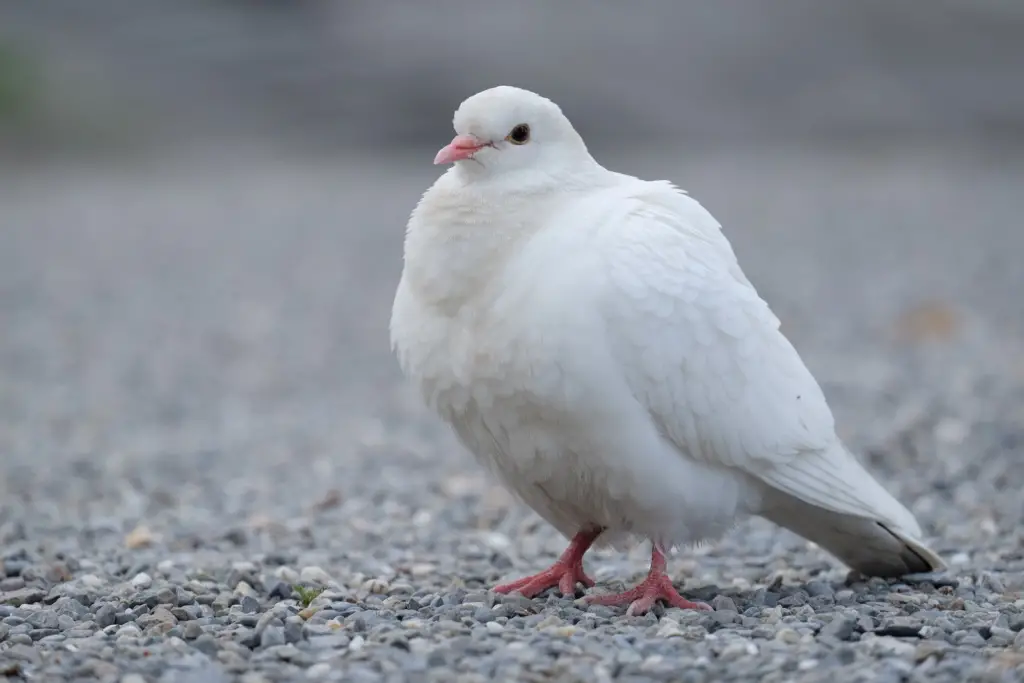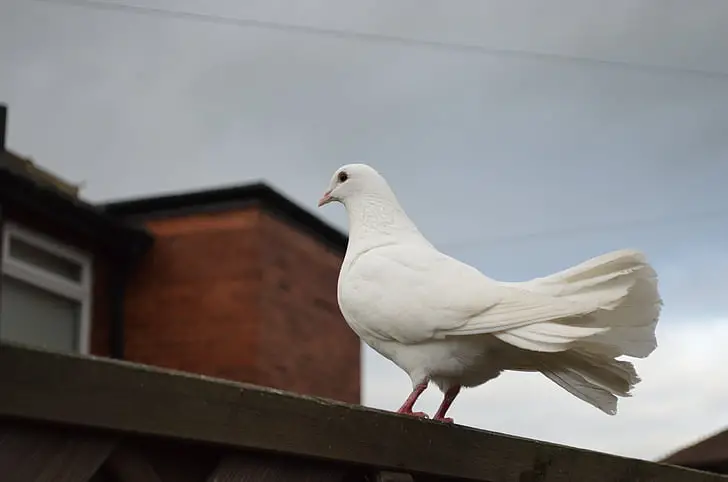1. They Struggle to Survive in the Wild

Domesticated doves used for wedding releases are not equipped to survive in the wild. Unlike wild birds that have honed instincts for finding food and water, these doves rely entirely on humans for their basic needs. When released, they are thrust into unfamiliar environments where resources like seeds and fresh water may be scarce or inaccessible. Their lack of experience in foraging means they are at high risk of starvation within days.
Additionally, they do not know how to identify safe shelters to protect themselves from harsh weather conditions. In urban areas, their challenges multiply, as they must navigate traffic, pollution, and competition with other birds. Their inability to recognize threats or defend themselves adds to their vulnerability. For most of these birds, survival becomes a desperate and often hopeless struggle.
2. They Become Easy Prey for Predators

Bright white feathers make wedding doves highly visible to predators in any environment. According to Palomacy Pigeon & Dove Adoptions, birds of prey, like hawks and falcons, can easily spot them in the air or against the ground, turning the released doves into immediate targets. Unlike wild birds, domesticated doves lack the instincts needed to detect and evade predators effectively.
Their slower flying speeds and lack of experience further disadvantage them, making escape nearly impossible. In rural areas, foxes, raccoons, and feral cats pose additional threats. Even in urban settings, predatory animals like crows and gulls can attack weakened or disoriented doves. The stress of release and exposure to predators often leads to quick and tragic outcomes. In many cases, these birds are caught and killed within hours of their release.
3. They Often Get Lost or Disoriented

Homing pigeons, commonly used in wedding releases, are bred for their ability to navigate back to their lofts. However, not all of them succeed in making the journey home. Changes in terrain, long distances, and adverse weather conditions can disorient them, leaving them unable to find their way back. Some doves are released without adequate training or preparation, further reducing their chances of navigating effectively.
Fatigue and hunger also play a role in their disorientation, as they may lack the energy to complete the flight. Once lost, they wander aimlessly in search of food and shelter, often ending up in dangerous or inhospitable areas. Urban environments, with their lack of natural resources and constant hazards, can be particularly unforgiving. Many doves that get lost are never able to reunite with their caretakers, as discussed by OneGreenPlanet.
4. They Face Starvation and Dehydration

Domesticated doves are not accustomed to foraging for food or locating water in the wild. According to the American Dove Association, unlike wild birds that can identify edible seeds, berries, or insects, released doves do not have the necessary instincts. They may go days without eating, quickly weakening and becoming more vulnerable to predators and environmental dangers. Dehydration is another critical threat, as they often fail to find safe and clean water sources.
Urban areas, where many lost doves end up, typically offer little in the way of natural food or water. Competition with wild birds for these limited resources further diminishes their chances of survival. Even in areas with abundant food, the stress of being released into an unfamiliar environment can prevent them from thriving. Starvation and dehydration are common causes of death for wedding doves soon after their release.
5. They Are Vulnerable to Harsh Weather

Weather conditions play a significant role in the fate of wedding doves, according to White Wings Dove Release. Domesticated birds are raised in controlled environments and are unprepared for the challenges of extreme temperatures or sudden storms. Cold weather can lead to hypothermia, especially for birds unable to find shelter in time. In hot climates, dehydration and heat exhaustion become serious risks.
Strong winds and heavy rain can disorient or physically harm them during flight, reducing their chances of survival. Wild birds instinctively know how to respond to weather changes, but domesticated doves lack this ability. The release of doves without considering local weather conditions often results in unnecessary suffering or death.
6. They Suffer from the Stress of Transport and Release

The process of preparing doves for release can be stressful and physically harmful. Birds are often transported long distances in cramped cages or boxes, which can lead to injuries like broken feathers or bruised wings. The confinement and unfamiliar surroundings cause significant stress, weakening their immune systems and making them more susceptible to illness.
At the release site, loud noises, large crowds, and abrupt handling can frighten the birds, further increasing their stress levels. Some doves may injure themselves in their panic, colliding with cages, people, or other birds. The act of release, while symbolic and beautiful for humans, is often traumatic for the birds involved.


